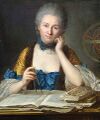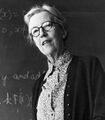Template:Selected anniversaries/December 17: Difference between revisions
No edit summary |
No edit summary |
||
| (33 intermediate revisions by the same user not shown) | |||
| Line 1: | Line 1: | ||
<gallery> | <gallery> | ||
File:Dionysos kantharos.jpg|link=Dionysus (nonfiction)| | File:Dionysos kantharos.jpg|link=Dionysus (nonfiction)|498 BC: [[Dionysus (nonfiction)|Dionysus]] gives speech which anticipates the coming of [[Saturnalia (nonfiction)|Saturnalia]]. | ||
File:Saturnus.jpg|link=Saturnalia (nonfiction)|497 BC: The first [[Saturnalia (nonfiction)|Saturnalia festival]] celebrated in ancient Rome. | File:Saturnus.jpg|link=Saturnalia (nonfiction)|497 BC: The first [[Saturnalia (nonfiction)|Saturnalia festival]] celebrated in ancient Rome. | ||
|File:Abd al-Rahman al-Sufi.jpg|link=Abd al-Rahman al-Sufi (nonfiction)|951: Astronomer [[Abd al-Rahman al-Sufi (nonfiction)|Abd al-Rahman al-Sufi]] invents new form of [[scrying engine]]. | |File:Abd al-Rahman al-Sufi.jpg|link=Abd al-Rahman al-Sufi (nonfiction)|951: Astronomer [[Abd al-Rahman al-Sufi (nonfiction)|Abd al-Rahman al-Sufi]] invents new form of [[scrying engine]]. | ||
||1610: Father Christoph Clavius SJ, the senior mathematician at the Collegio Romano writes to inform Galileo that he and other Jesuits at the college had seen the four moons of Jupiter. Only two months earlier he had said that if Galileo saw "planets" around Jupiter in his glass, then he must have put them there. *David Leverington, Babylon to Voyager and Beyond: A History of Planetary Astronomy Pic. | |||
File:Emilie Chatelet portrait by Latour.jpg|link=Émilie du Châtelet (nonfiction)|1706: Mathematician and physicist [[Émilie du Châtelet (nonfiction)|Émilie du Châtelet]] born. She will translate and comment upon on Isaac Newton's ''Principia Mathematica''. | File:Emilie Chatelet portrait by Latour.jpg|link=Émilie du Châtelet (nonfiction)|1706: Mathematician and physicist [[Émilie du Châtelet (nonfiction)|Émilie du Châtelet]] born. She will translate and comment upon on Isaac Newton's ''Principia Mathematica''. | ||
|| | ||1745: James Tytler born ... apothecary and the editor of the second edition of Encyclopædia Britannica. Tytler became the first person in Britain to fly by ascending in a hot air balloon (1784). Pic. | ||
|| | ||1778: Humphry Davy born ... chemist and physicist. Pic. | ||
|| | ||1787: Jan Evangelista Purkyně born ... anatomist and physiologist. In 1839, he coined the term 'protoplasm' for the fluid substance of a cell. He was one of the best known scientists of his time. Pic. | ||
|| | ||1790: Discovery of the Aztec calendar stone. | ||
|| | ||1797: Joseph Henry born ... physicist and engineer. Pic. | ||
|| | ||1804 One of the earliest science board games released. An astronomical board game, folded into cardboard slip case, entitled 'Science in Sport, or the Pleasures of Astronomy; A New & Instructive Pastime. Revised & approved by Mrs. Bryan; Blackheath', 'Published, December 17th 1804, by the Proprietor, John Wallis, No. 16, Ludgate Street, London The game is based on the traditional Game of the Goose, which was adapted to a wide range of themed boards, many produced by John Wallis, one of the leading publishers of board games in the early 19th century. Pic: https://pballew.blogspot.com/2018/12/on-this-day-in-math-december-17.html | ||
||1824: John Kerr born ... physicist and a pioneer in the field of electro-optics. He is best known for the discovery of what is now called the Kerr effect. | |||
|| | ||1833: Kaspar Hauser dies ... alleged feral child. | ||
||1896 | File:Felice Casorati.jpg|link=Felice Casorati (nonfiction)|1835: [[Felice Casorati (nonfiction)|Felice Casorati]] born. Casorati will contribute the Casorati–Weierstrass theorem in complex analysis. | ||
File:Marius Sophus Lie.jpg|link=Marius Sophus Lie (nonfiction)|1842: Mathematician and academic [[Marius Sophus Lie (nonfiction)|Marius Sophus Lie]] born. He will largely create the theory of continuous symmetry and apply it to the study of geometry and differential equations. | |||
||1853: Pierre Paul Émile Roux born ... physician, bacteriologist, and immunologist ... one of the closest collaborators of Louis Pasteur (1822–1895), a co-founder of the Pasteur Institute, and responsible for the institute's production of the anti-diphtheria serum, the first effective therapy for this disease. Pic. | |||
||1861: Arthur Edwin Kennelly born ... electrical engineer. Pic. | |||
||1862: American Civil War: General Ulysses S. Grant issues General Order No. 11, expelling Jews from parts of Tennessee, Mississippi, and Kentucky. | |||
||1863: Henri Eugène Padé born ... mathematician, who is now remembered mainly for his development of Padé approximation techniques for functions using rational functions. Pic. | |||
||1892: George Brayton dies ... mechanical engineer who lived with his family in Boston and who is noted for introducing the constant pressure engine that is the basis for the gas turbine, and which is now referred to as the Brayton cycle. Pic. | |||
||1896: Joseph von Gerlach dies ... professor of anatomy and a pioneer of histological staining and anatomical micrography. In 1858 Gerlach introduced carmine mixed with gelatin as a histological stain. Along with Camillo Golgi, he was a major proponent of the reticular theory that the brain's nervous system consisted of processes of contiguous cells fused to create a massive meshed network. Pic. | |||
||1896: Pittsburgh, Pennsylvania's Schenley Park Casino, which was the first multi-purpose arena with the technology to create an artificial ice surface in North America, is destroyed in a fire. | |||
||1898: Joseph Oscar Irwin born ... statistician who advanced the use of statistical methods in biological assay and other fields of laboratory medicine. Irwin’s grasp of modern mathematical statistics distinguished him not only from older medical statisticians like Major Greenwood but contemporaries like Austin Bradford Hill. Pic. | |||
File:Dame Mary Lucy Cartwright.jpg|link=Mary Cartwright (nonfiction)|1900: Mathematician and academic [[Mary Cartwright (nonfiction)|Mary Cartwright]] born. She will do pioneering work in what will later be called [[Chaos theory (nonfiction)|chaos theory]]. | File:Dame Mary Lucy Cartwright.jpg|link=Mary Cartwright (nonfiction)|1900: Mathematician and academic [[Mary Cartwright (nonfiction)|Mary Cartwright]] born. She will do pioneering work in what will later be called [[Chaos theory (nonfiction)|chaos theory]]. | ||
||1903 | ||1903: The Wright brothers make the first controlled powered, heavier-than-air flight in the Wright Flyer at Kitty Hawk, North Carolina. | ||
File:Lord Kelvin by Hubert von Herkomer.jpg|link=William Thomson, 1st Baron Kelvin (nonfiction)|1907: [[William Thomson, 1st Baron Kelvin (nonfiction)|Lord Kelvin]] dies. He did much to unify the emerging discipline of physics in its modern form. | File:Lord Kelvin by Hubert von Herkomer.jpg|link=William Thomson, 1st Baron Kelvin (nonfiction)|1907: [[William Thomson, 1st Baron Kelvin (nonfiction)|Lord Kelvin]] dies. He did much to unify the emerging discipline of physics in its modern form. | ||
||1908 | ||1908: Willard Libby born ... chemist and academic, Nobel Prize laureate. Pic. | ||
||1912: Fritz Klingenberg born ... German officer in the Waffen-SS who served with the SS Division Das Reich and was a commander of the SS Division Götz von Berlichingen. He was best known for his role in the capture of the Yugoslavian capital, Belgrade with just 6 men, for which he was awarded the Knight's Cross of the Iron Cross. Pic. | |||
||1916: Martin Arthur Pomerantz born ... physicist who served as Director of the Bartol Research Institute and who had been a leader in developing Antarctic astronomy. Pic search. | |||
||1920: Kenneth E. Iverson born ... computer scientist, developed the APL programming language. Pic. | |||
||1920: Herbert (Bert) Sydney Green born ... physicist. Green was a doctoral student of the Nobel Laureate Max Born at Edinburgh, with whom he was involved in the development of the modern kinetic theory. Green is the letter "G" in the BBGKY hierarchy. Pic. | |||
|| | ||1938: Gustav Heinrich Johann Apollon Tammann dies ... chemist-physicist of Estonian and Baltic-German descent who made important contributions in the fields of glassy and solid solutions, heterogeneous equilibria, crystallization, and metallurgy. Pic. | ||
File:Otto Hahn 1970.jpg|link=Otto Hahn (nonfiction)|1938: Physicist [[Otto Hahn (nonfiction)|Otto Hahn]] discovers the nuclear fission of the heavy element uranium, the scientific and technological basis of nuclear energy. | File:Otto Hahn 1970.jpg|link=Otto Hahn (nonfiction)|1938: Physicist [[Otto Hahn (nonfiction)|Otto Hahn]] discovers the nuclear fission of the heavy element uranium, the scientific and technological basis of nuclear energy. | ||
||1940 | ||1940: Alicia Boole Stott dies ... mathematician and academic. Pic. | ||
||1947: Johannes Nicolaus Brønsted dies ... chemist and academic. He introduced the protonic theory of acid-base reactions in 1923, simultaneously with Thomas Martin Lowry. Pic. | |||
||1957: The United States successfully launches the first Atlas intercontinental ballistic missile at Cape Canaveral, Florida. | |||
|| | ||1961: Niterói circus fire: Fire breaks out during a performance by the Gran Circus Norte-Americano in the city of Niterói, Rio de Janeiro, Brazil, killing more than 500. | ||
|| | ||1964: Victor Francis Hess dies ... physicist and academic, Nobel Prize laureate, discovered cosmic rays. Pic. | ||
||1964 | ||1964: Jurjen Ferdinand Koksma dies ... mathematician who specialized in analytic number theory. Pic: book cover. | ||
||1969 – Project Blue Book: The United States Air Force closes its study of UFOs. | ||1969 – Project Blue Book: The United States Air Force closes its study of UFOs. | ||
||1977: U.S. Army combat historian Samuel Lyman Atwood Marshall dies. Known professionally as S. L. A. Marshall, and nicknamed "Slam" (the combination of all four of his initials), he authored some 30 books about warfare, including ''Pork Chop Hill: The American Fighting Man in Action'', which was made into a film of the same name. However, his legacy is mired in scandal, as he lied about his involvement in the primary events he wrote about. Pic. | |||
||1999: Jürgen Kurt Moser dies ... mathematician, honored for work spanning over 4 decades, including Hamiltonian dynamical systems and partial differential equations. Pic. | |||
||2003 | ||2003: SpaceShipOne, piloted by Brian Binnie, makes its first powered and first supersonic flight. | ||
| | ||2014: Dieter Grau dies ... scientist and engineer. Peenemunde. Pic. | ||
|| | ||2015: Osamu Hayaishi dies ... biochemist and academic. Pic search. | ||
</gallery> | </gallery> | ||
Latest revision as of 17:20, 7 February 2022
498 BC: Dionysus gives speech which anticipates the coming of Saturnalia.
497 BC: The first Saturnalia festival celebrated in ancient Rome.
1706: Mathematician and physicist Émilie du Châtelet born. She will translate and comment upon on Isaac Newton's Principia Mathematica.
1835: Felice Casorati born. Casorati will contribute the Casorati–Weierstrass theorem in complex analysis.
1842: Mathematician and academic Marius Sophus Lie born. He will largely create the theory of continuous symmetry and apply it to the study of geometry and differential equations.
1900: Mathematician and academic Mary Cartwright born. She will do pioneering work in what will later be called chaos theory.
1907: Lord Kelvin dies. He did much to unify the emerging discipline of physics in its modern form.
1938: Physicist Otto Hahn discovers the nuclear fission of the heavy element uranium, the scientific and technological basis of nuclear energy.







